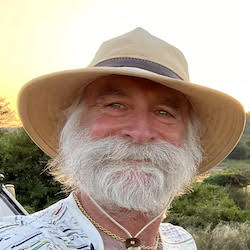The classical physics of Newton and Laplace took the existence of space, time and ordinary physical objects for granted, leaving questions of fundamental ontology to the philosophers. It also took for granted the ability of human beings to observe their surroundings, conduct experiments, communicate with each other, and reach agreement about empirical facts and theoretical explanations. How humans were able to do these things was also left to the philosophers, and to the nascent discipline of psychology.
This straightforward division between what physics was about and what it could safely ignore began to break down in the late 19th century, as empirical observations increasingly suggested the existence of complex but invisible phenomena and ancient philosophical ideas such as atomism were imported into physical theory to fill the conceptual void. By the late 1920s – not quite a century ago – it was also becoming evident that how observers probed this invisible world had a large effect on what they saw. Niels Bohr, Werner Heisenberg, and others of the first generation of quantum theorists openly questioned whether the classical idea of an observer-independent “objective” reality might be rendered inadequate by the new physics. Such questioning was resisted by more traditionally-minded physicists, most famously by Albert Einstein. The great majority of physicists, however, chose not to worry about such issues, adding the interpretation of quantum theory to the already-long list of topics to be left to the philosophers. An informal doctrine of “shut up and calculate” dominated the pedagogy of physics, producing several generations of skilled practitioners who largely did not care about the ontology their theories described.
Complacency about ontological issues could not, however, comfortably be maintained in one key area of physics: the intersection between quantum theory and general relativity. Here the mathematical assumptions of two important theoretical frameworks were fundamentally at odds. While in general relativity, spacetime is smooth and continuous at arbitrarily-small scales, in quantum theory the structure of spacetime itself becomes choppy or foamy as distances or time intervals become very small. This conflict was rendered acute in 1982 by Alain Aspect’s experiment (which led to a Nobel Prize in 2022) that demonstrated, for the first time, quantum entanglement over macroscopic distances. This experimental result, since confirmed many times at ever-larger scales, showed that the classical idea that spatial separation provides an ontological distinction between physical systems – an idea Einstein had championed against Bohr – was fundamentally flawed.
The most radical response to the crisis in theoretical physics was proposed not by a philosopher, but by a physicist – John Archibald Wheeler, who had studied with both Bohr and Einstein, worked on the Manhattan Project, and brought general relativity into mainstream physics through the study of black holes. Wheeler’s proposal, first clearly enunciated in the early 1970s and elaborated over the next three decades, was that the fundamental ontology most consistent with contemporary physics is one of “observer-participants” – entities that observe and manipulate their surroundings, including each other, and by so doing jointly create a shared reality. Concomitant with this idea were the rejection of explanatory reductionism, the primacy of “laws” in physics, the idea of the continuum on which classical notions of space and time were based, and the idea that spacetime is ontologically fundamental.
Wheeler’s status in the physics community assured that his ideas would be taken seriously. Aspect’s experiment, coupled with Richard Feynman’s open challenge to develop a quantum theory of computation, provided the empirical and conceptual basis for Wheeler’s ideas to become transformatory. By 2000, an ever-growing community of physicists had reformulated quantum theory, turning a mathematical formalism originally intended to describe the behavior of atoms and their constituent particles into a completely general, scale-free theory of information exchange and computation. This quantum information theory provided a new conceptual framework with which to address problems in all domains of physics, from elementary particles to cosmology.
While many physicists remain uninterested in questions of ontology, and while quantum information theory is still a young and developing field supporting a great diversity of mutually-incompatible ideas and approaches, a strong current within the quantum information community is focused on the development of mathematically-consistent, empirically-testable models in which the spacetime described by general relativity emerges as an approximate description of the communicative behavior of large numbers of relatively simple information-processing agents. Such models provide, in effect, rigorous examples of what “observer-participants” could turn out to be in practice.
The idea that spacetime is emergent challenges the ontological foundations not just of classical physics, but of ordinary human perception, cognition, and action. If spacetime is not ontologically fundamental, the spatial boundaries of objects cannot be ontologically fundamental. If spacetime is not ontologically fundamental, the temporal continuity of objects cannot be ontologically fundamental. Objects, therefore, cannot be ontologically fundamental. These statements apply not just to electrons or atoms, but to stars, planets, and human beings. The classical notion of “objectivity” as observer-independence becomes unsupportable, as Wheeler himself clearly recognized.
Contemporary physics presents us, therefore, with both extraordinarily powerful theoretical, observational, and technological tools, and deep challenges to the commonsense ontology that humans develop as infants and refine through everyday experience. It points the way toward a new conceptualization of science as being about curiosity, creativity, and communication, not just at the human scale, but at all scales.
